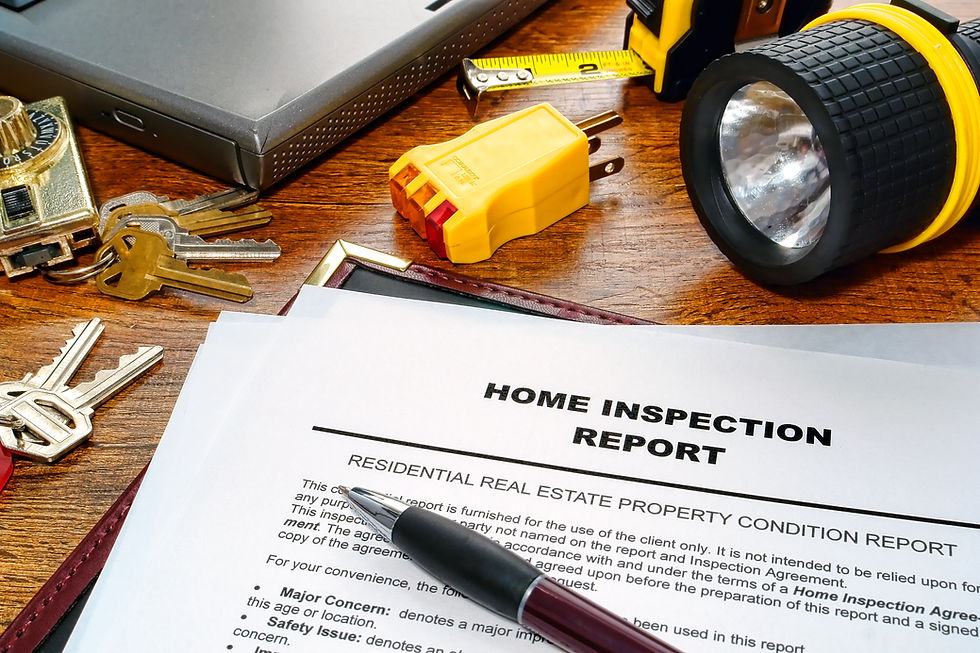Why Moisture and Leak Detection Matters: Protecting Your Health and Home
- John

- Jul 9
- 2 min read
Moisture and leaks inside your home aren’t just inconvenient or cosmetic problems. They can signal deeper issues that affect your health, damage your property, and lead to expensive repairs. In New Zealand’s often damp climate, moisture ingress is a common concern, and undetected leaks can quickly lead to serious consequences. This is why combining traditional building inspections with advanced tools like thermal imaging is so important.
The Hidden Dangers of Moisture in the Home While a water stain on the ceiling might seem minor, it can be the tip of the iceberg. Moisture inside your walls or under your floors can create the perfect environment for:
Mould and mildew growth
Rotting timber and structural weakening
Increased pest activity, including borer and rodents
Poor indoor air quality and respiratory issues
Over time, these hidden issues can cause:
Worsening allergies and asthma
Coughing, sinus problems, and skin irritation
Ongoing health issues for babies, elderly residents, and those with compromised immunity
Why You Need to Know What’s Inside Your Walls Moisture isn’t always visible. Water can seep in through roof leaks, poor flashing, plumbing failures, or cracked cladding. Once it gets into your walls, it can stay trapped and invisible until real damage is done.
Thermal imaging helps reveal cooler, damp areas without cutting into walls. When used in combination with a professional building inspection and moisture meter testing, it gives a far more complete picture of the home’s condition.
How We Detect Moisture and Leaks at Wanaka Property Inspections
Our inspection process typically includes:
Visual inspection of common leak-prone areas (e.g., bathrooms, laundry, exterior walls)
Moisture meter readings along skirting boards, window frames, and ceilings
Thermal imaging to identify hidden moisture or insulation gaps
Documentation and photographic evidence of any concerns
Why Early Detection Saves You Money Catching a leak early allows for targeted repairs before the damage spreads. A small leak today could become:
An expensive re-cladding job
A roof or window replacement
Major interior repairs or mould remediation
In contrast, fixing a leak promptly might only require simple sealant or flashing replacement. The cost difference can be thousands of dollars.
The Role of Thermal Imaging Thermal imaging identifies subtle temperature changes behind surfaces. Damp areas typically appear cooler than the surrounding materials, allowing trained inspectors to pinpoint areas of concern without causing damage.
It is especially useful for:
Detecting leaks in tiled showers and bathrooms
Locating ceiling leaks beneath roofing
Identifying areas with poor ventilation or trapped moisture
Confirming the effectiveness of previous repairs
When Should You Book a Moisture or Leak Inspection?
Buying a home, especially if it was built between 1990–2004
Living in an older property with no cavity system
After flooding, storms, or roofing issues
If you notice musty smells, condensation, or unexplained stains
As part of regular property maintenance
Moisture and leaks are often silent threats. Left unchecked, they can compromise your health, weaken your home, and cost you thousands. Combining professional building inspections with thermal imaging and moisture testing offers the most reliable way to detect these problems early.
Book a Leak and Moisture Inspection Today Don’t wait for visible damage. If you’re concerned about dampness, mould, or musty smells in your home, contact us today. Our certified team will help you get the answers you need—before the damage gets worse.






Comments